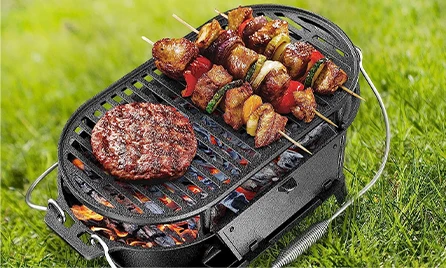
Tips for Perfectly Seasoning Your Cast Iron Cookware Every Time
The Art of Seasoning Cast Iron A Culinary Tradition
Cast iron cookware has been a staple in kitchens around the world for centuries. Known for its durability and excellent heat retention, cast iron pans and pots are cherished by both amateur cooks and professional chefs alike. However, one of the most crucial aspects of maintaining cast iron cookware is the process of seasoning. This age-old technique not only enhances the performance of the cookware but also contributes to its longevity.
What is Seasoning?
At its core, seasoning refers to the process of applying a layer of fat to the surface of cast iron cookware and then heating it, creating a natural non-stick surface. This process involves polymerization, where the fat is heated to its smoke point and transforms into a hard, protective coating. The seasoning not only prevents rust but also provides a slick, non-stick surface for cooking.
The Benefits of Seasoning
1. Non-stick Surface Properly seasoned cast iron offers a natural non-stick surface that improves with each use. Cooking with minimal oil becomes possible, promoting healthier meal preparation.
2. Rust Protection Seasoning creates a barrier between the metal and moisture, helping to prevent rust and extend the life of the cookware. This is particularly important if you live in a humid environment.
3. Enhanced Flavor Over time, seasoned cast iron develops a complex flavor profile that can enhance the taste of food. Each dish cooked in a well-seasoned pan contributes to its character, making it even more unique.
4. Even Heat Distribution Cast iron is known for its ability to retain heat, and seasoning enhances this property, allowing for even cooking and browning, essential for achieving that perfect sear on meats and vegetables.
How to Season Cast Iron
While the process of seasoning may seem daunting, it is straightforward and rewarding. Here’s a simple guide to get you started.
seasoning cast iron

1. Cleaning If you have a new cast iron pan, it may come pre-seasoned, but if it’s vintage or hasn’t been used in a while, start by cleaning it thoroughly with hot soapy water and a scrub brush. Rinse and dry completely. Avoid using soap on a seasoned pan; instead, clean with hot water and a brush.
2. Choosing the Right Oil Select an oil with a high smoke point, such as flaxseed oil, grapeseed oil, or vegetable oil. Flaxseed oil is particularly popular for its ability to create a hard, durable coating.
3. Applying the Oil Rub a thin layer of oil all over the surface of the cookware, including the exterior and handle. Be sure not to overapply; a little goes a long way.
4. Heating Preheat your oven to 450°F (230°C). Place the oiled cookware upside down on the top rack, with a baking sheet or aluminum foil on the bottom rack to catch any drips. Bake for one hour to allow the oil to polymerize.
5. Cool Down After baking, turn off the oven and let the cookware cool down inside. This will help the seasoning set properly.
6. Repeat For optimal results, repeat the oiling and baking process a few times to build a solid seasoning layer.
Maintaining Your Seasoning
After seasoning, it’s important to maintain your cast iron cookware. Always clean it with hot water and a gentle scrub. Avoid using soap unless absolutely necessary. After cleaning, dry the pan thoroughly and apply a light layer of oil to keep the seasoning intact.
Conclusion
Seasoning your cast iron cookware is an essential skill that transforms a simple pan into a treasured kitchen companion. With practice, you’ll master the art of seasoning, ensuring your cast iron remains a reliable, flavorful tool for years to come. Embrace this culinary tradition, and enjoy the delicious results of your efforts in the kitchen.
-
Cast Iron Cookware Pancake Pan- ZD Cookware|Non-Stick, Even Heat, DurableNewsAug.02,2025
-
Cast Iron Cookware- Baixiang County Zhongda Machinery|Non-Stick, Heat RetentionNewsAug.02,2025
-
High Quality Kitchen Durable Black Round Cast Iron Cookware Pancake Crepe Pan With Wooden Handle|Non-Stick Surface&Heat RetentionNewsAug.02,2025
-
Authentic Traditional Chinese Wok for High-Performance CookingNewsAug.02,2025
-
Season Cast Iron Perfectly with GPT-4 Turbo TipsNewsAug.01,2025
-
High Quality Cast Iron Cookware - Baixiang County Zhongda MachineryNewsAug.01,2025


